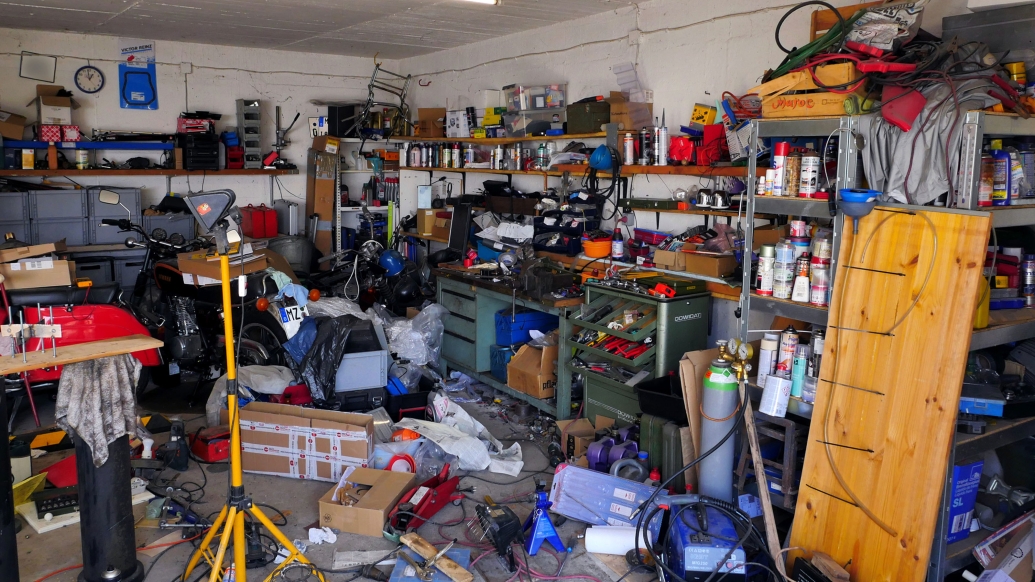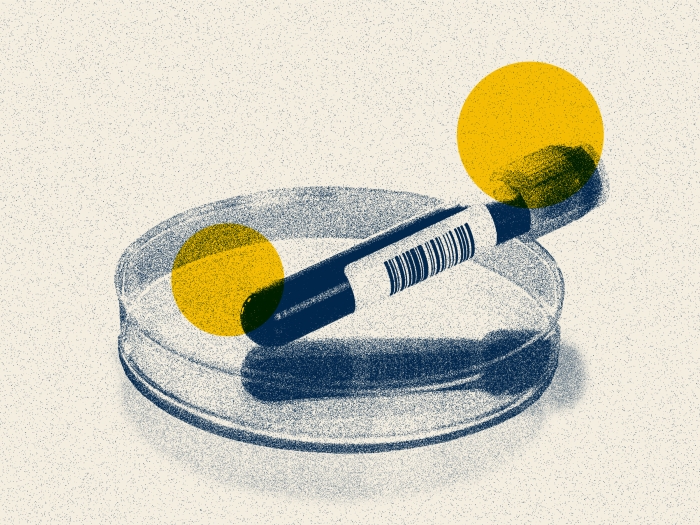These included chemicals present in gasoline and gasoline powered equipment, lawn care products, pesticides, paint and woodworking supplies
4:15 PM
Author |

Over the last decade, researchers at University of Michigan continue to find that exposure to environmental toxins — from pesticides used in agriculture to volatile organic compounds in the manufacturing industry — is linked to the development of amyotrophic lateral sclerosis, or ALS.
The buildup of exposures, which researchers call the ALS exposome, is possibly associated with recreational activities such as woodworking and gardening.
Now, a Michigan Medicine study finds that storing chemicals in a garage at home may associate with an increased risk of ALS.
The results are published in Amyotrophic Lateral Sclerosis and Frontotemporal Degeneration.
“Identifying disease-provoking exposures can inform and motivate interventions to reduce exposure, risk and, ultimately, the ALS burden,” said first author Stephen Goutman, M.D., M.S., director of the Pranger ALS Clinic and associate director of the ALS Center of Excellence at University of Michigan.
“Exposures in the home setting are an important part of the ALS exposome, as it is one place where behavior modifications could possibly lessen ALS risk.”
Storage containing volatile chemicals in garages is extremely common, whether it’s in a car or motorcycle, equipment like a chainsaw, or solvents, cleaners, paints and other items.
Investigators assessed exposures in the residential setting from a survey of more than 600 participants both with and without ALS. Through statistical analysis, they found that the storage of chemicals — including gasoline and gasoline powered equipment, lawn care products, pesticides, paint and woodworking supplies — were significantly associated with ALS risk.
All of the reported chemicals linked to disease development were volatile with toxic components. Most participants reported storing several of the items in their attached garage.
Storing chemicals in a detached garage, however, did not show as strong of an association with risk.
Researchers say the flow of air and airborne pollutants from attached garages to the living space may explain the finding.
“Especially in colder climates, air in the garage tends to rush into the house when the entry door is opened, and air flows occur more or less continuously through small cracks and openings in walls and floors,” said Stuart Batterman, Ph.D., senior author and professor of environmental health sciences at the U-M School of Public Health.
“Thus, it makes sense that keeping volatile chemicals in an attached garage shows the stronger effect.”
The latest building codes, Batterman notes, tackle this problem by specifying measures to reduce or eliminate these air flows.
“We are beginning to see risk factors across multiple settings that may associate with a greater ALS risk; we also see some relationships across the studies, for example, woodworking and woodworking supplies and gardening and lawn care supplies,” Goutman said.
“This begs the question: is it the activities that associate with ALS risk or the exposures to related products? This requires further research.”
SEE ALSO: Novel genetic scoring system helps determine ALS disease risk
In 2016, the research team found that people with ALS had higher concentrations of pesticides in their blood compared to people without the condition.
A subsequent study published in 2019 linked organochlorine pesticides and polychlorinated biphenyls, or PCBS, to worsening survival for ALS.
“With each study, we better understand the types of exposures that increase the risk of developing ALS,” said senior author Eva Feldman, M.D., Ph.D., director of the ALS Center of Excellence at U-M and James W. Albers Distinguished University Professor at U-M.
“We now need to build on these discoveries to understand how these exposures increase ALS risk. In parallel, we must continue to advocate to make ALS a reportable disease. Only then we will fully understand the array of exposures that increase disease risk."
Studies to understand how environmental exposures contribute to the development of ALS and other neurodegenerative diseases, both of people with and without family history of the condition, are underway.
Additional authors: Include Jonathan Boss, Ph.D., Dae Gyu Jang, Ph.D., Caroline Piecuch, Hasan Farid, Madeleine Batra, Bhramar Mukherjee, Ph.D all of University of Michigan.
Funding: This study was supported by the National Institutes of Health, The National ALS Registry/CDC/ATSDR, the ALS Association, the NeuroNetwork for Emerging Therapies, the Robert and Katherine Jacobs Environmental Health Initiative, the NeuroNetwork Therapeutic Discovery Fund, the Peter R. Clark Fund for ALS Research, the Sinai Medical Staff Foundation, Scott L. Pranger, and the University of Michigan.
Citation: “Residential exposure associations with ALS risk, survival, and phenotype: a Michigan-based case-control study,” Amyotrophic Lateral Sclerosis and Frontotemporal Degeneration.
DOI: 10.1080/21678421.2024.2336110
Sign up for Health Lab newsletters today. Get medical tips from top experts and learn about new scientific discoveries every week by subscribing to Health Lab’s two newsletters, Health & Wellness and Research & Innovation.
Sign up for the Health Lab Podcast: Add us on Spotify, Apple Podcasts or wherever you get you listen to your favorite shows.

Explore a variety of health care news & stories by visiting the Health Lab home page for more articles.

Department of Communication at Michigan Medicine

Want top health & research news weekly? Sign up for Health Lab’s newsletters today!





